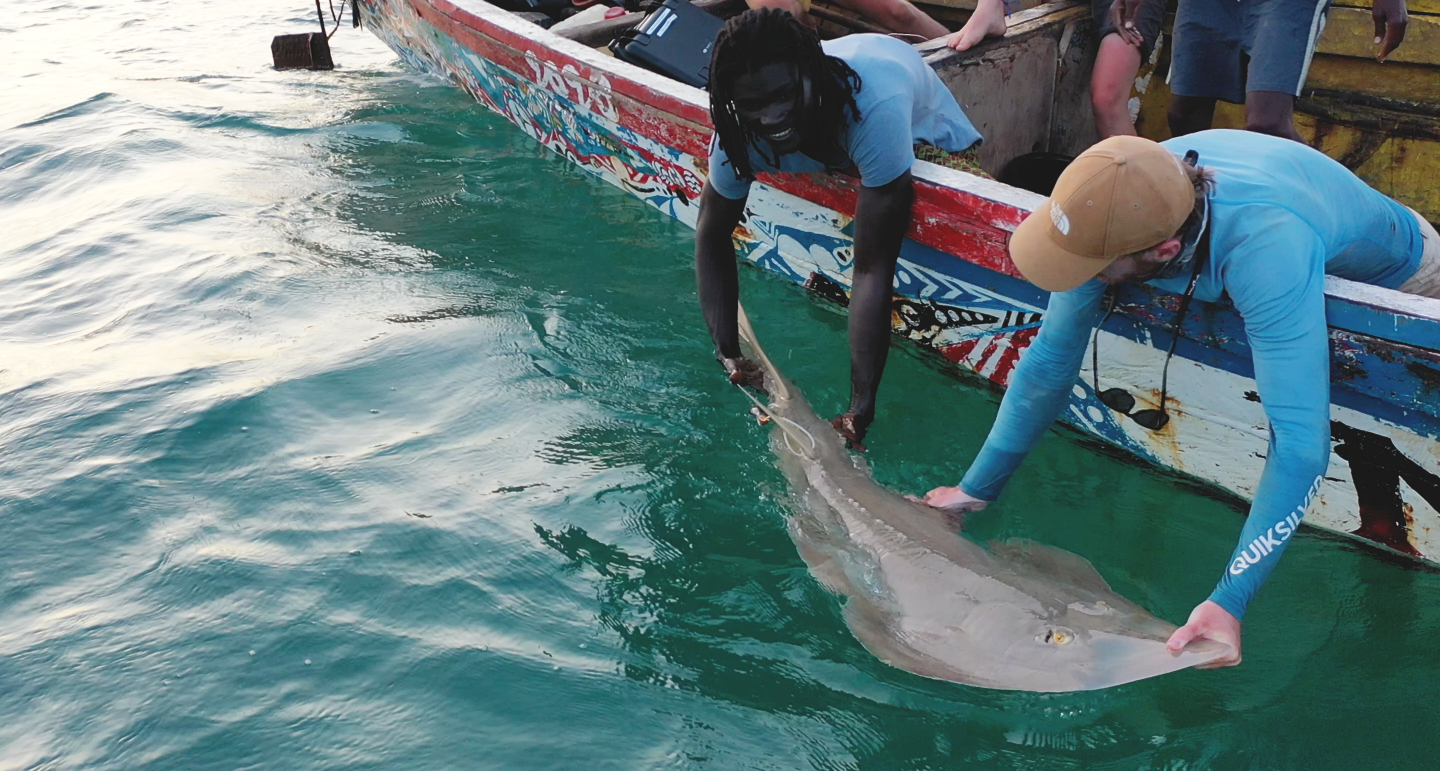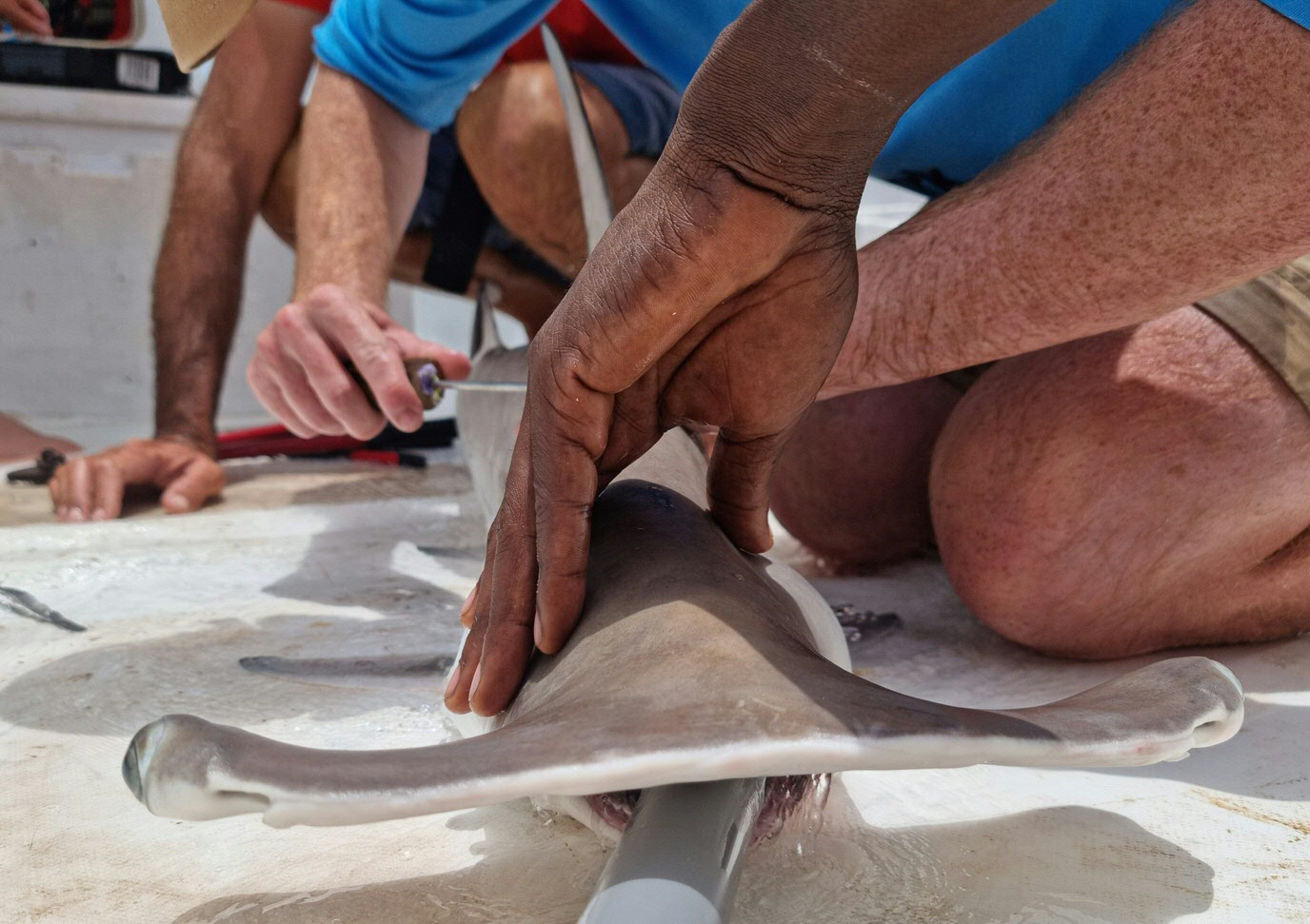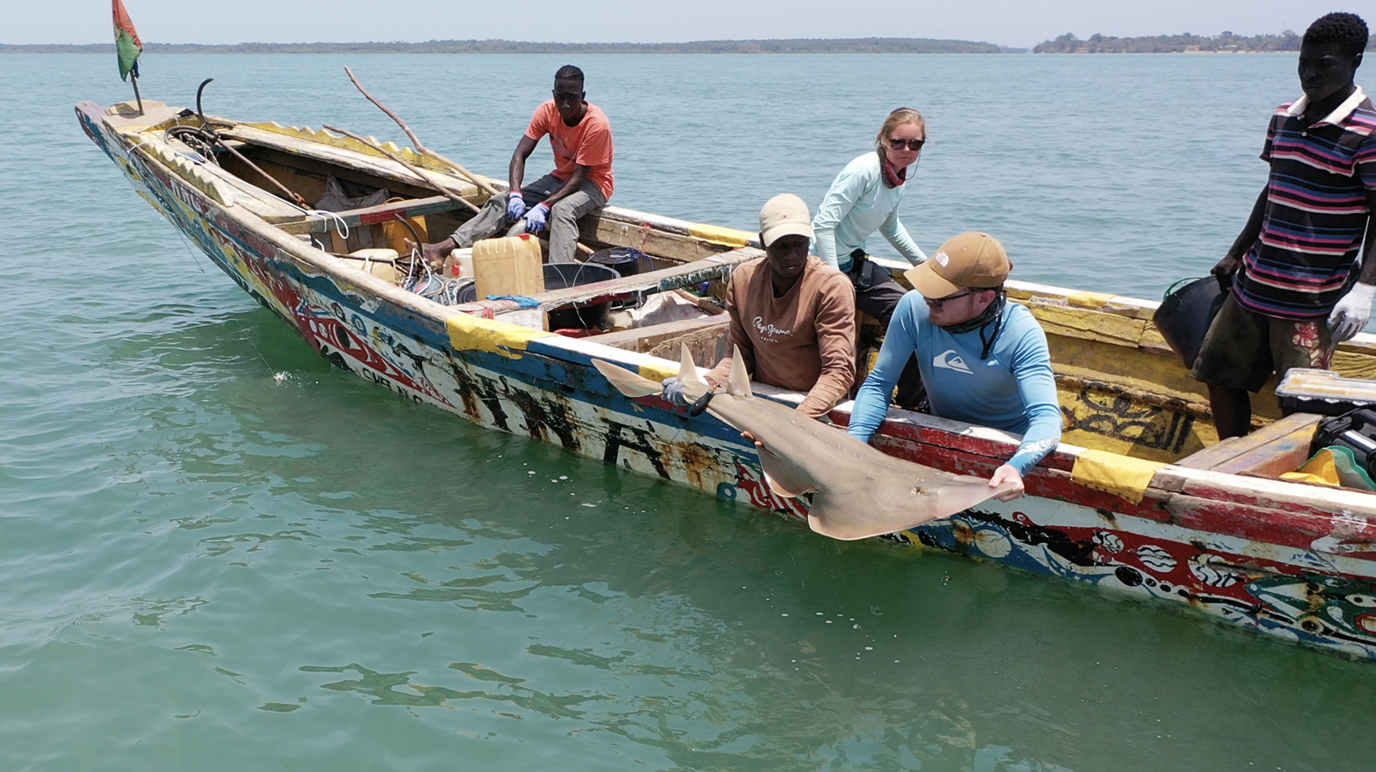University of Groningen and local nature organization tag first critically endangered sharks and rays in West Africa
In a first for the region, highly threatened sharks and rays have been tagged and released by scientists in the Bijagós Archipelago, off the coast of Guinea-Bissau in West Africa. The main goal of the expedition was to determine why these species use the shallow waters of the archipelago. During the four-week expedition, a team of researchers from the University of Groningen (the Netherlands), in collaboration with local conservationists from the Institute of Biodiversity and Protected Areas (IBAP) and local fishermen, worked together to place satellite transmitters on critically endangered guitarfish. In addition, the team studied various threatened shark species, such as hammerhead sharks, bull sharks, and blacktip sharks to collect essential data to support the protection of these species within the archipelago and the wider region.

Highly endangered fish
According to the latest estimates, approximately 31% of all shark and ray species in the world are now threatened with extinction. Within the West African region, species like the blackchin guitarfish and scalloped hammerhead shark are now in the most precarious category of the international list of threatened species: Critically Endangered. ‘We are afraid that these species of sharks and rays might disappear from the Bijagós Archipelago, or even from the entire West African region, just like what happened with the sawfishes’, says Emanuel Dias, the Director of the Orango National Park within the Bijagós. Dias continues: ‘The organization for which I work, the Institute for Biodiversity and Protected Areas (IBAP), has management plans for the national parks within the Bijagós, but we are noticing that boat fishing by other countries is threatening sharks and rays both within and outside the parks. The Bijagós is a large area and controlling the fisheries is a big challenge. That is why research on sharks and rays is important to ensure that we can protect these species more effectively.’
Socio-cultural value of sharks and rays
Sharks and rays have played an important historical role in the cultural ceremonies and celebrations of local Bijagós communities in Guinea-Bissau. These communities inhabit 20 of the 88 islands in the archipelago, and all islands are lined by dense mangrove forests, extensive sand, and mudflats, and are connected through a complex system of tidal channels. During the traditional ceremonies, the Bijagós communities wear shark-inspired costumes, with masks and fins resembling hammerhead sharks or sawfishes, and within some villages one can find buildings in the shape of sawfishes. The sawfishes—a group of large ray species—that were once common in the region are now considered to be extinct in West Africa. The Bijagós Archipelago was one of the last places where this species could be found in the region.

Tracking guitarfish
In their most recent expedition, a team led by the University of Groningen and supported by IBAP and local fishermen, managed to catch, sample, and safely release over 50 sharks and rays belonging to 10 different species. The biggest achievement? ‘Deploying the first-ever satellite transmitters on critically endangered blackchin guitarfish and achieving this milestone in close collaboration with local fishermen. They know how important these species are for the Bijagós culture’, explains Guido Leurs, expedition leader and shark researcher. Leurs adds: ‘Based on our research over the past years, we have seen that this species is declining rapidly in the region. These transmitters will allow us to safely track and monitor these animals for almost a year, which will allow us to map where these animals migrate to and how they connect different natural areas in the wider region. This information is crucial for our local partner organizations, like IBAP, to enhance the protection of these species across their migrations and during their life cycle. Right now, we have no idea where these animals go.’
A future for sharks in West Africa
In another exciting development, the team also discovered a possible nursery area for newborn shark species, including the threatened scalloped hammerhead. ‘We think that scalloped hammerhead sharks use shallow coastal areas like the Bijagós during the early life stages and that once they grow older, they move to the open ocean. The problem is that when these sharks leave the Bijagós, they may be threatened by industrialized fisheries operating outside national park boundaries. We want to figure out how big that risk is for them’, explains Leurs. He concludes: ‘We are proud of our teams for working together to achieve conservation results that benefit local communities as well as these vulnerable ecosystems that are essential to many marine and terrestrial species.’

| Last modified: | 18 May 2022 12.39 p.m. |
More news
-
13 May 2024
‘The colourful cells of petals never get boring!’
Most people will enjoy colours in nature. However, the interest of evolutionary biologist Casper van der Kooi goes much further: he studies how flowers, birds, butterflies, and beetles get their colours. He also studies how these colours are used...
-
13 May 2024
Trapping molecules
In his laboratory, physicist Steven Hoekstra is building an experimental set-up made of two parts: one that produces barium fluoride molecules, and a second part that traps the molecules and brings them to an almost complete standstill so they can...
-
07 May 2024
Lecture with soon to be Honorary Doctor Gerrit Hiemstra on May 24
In celebration of his honorary doctorate, FSE has invited Hiemstra to give a lecture entitled ‘Science, let's talk about it’ on the morning of 24 May
